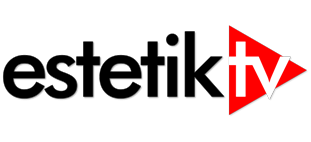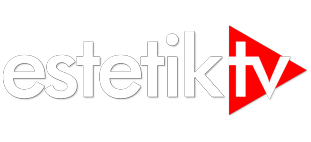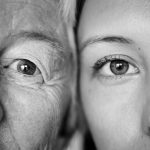Understanding the Target: Ronaldo’s Physical Profile
Key statistics and physical benchmarks
Ronaldo’s body-fat percentage has been reported around 7% in some sources, reflecting elite conditioning. His muscle-mass percentage has been quoted at approximately 50% of body weight. His performance stats are exceptional: a top-sprint speed around 33.6 km/h (20.9 mph) has been cited.
What makes his physique remarkable
-
Exceptionally low body-fat vs muscle mass ratio for a 1.87 m / 83 kg (approx) athlete.
-
High explosiveness, sprint speed, vertical jump and endurance — attributes honed via training.
-
Extreme discipline in nutrition, recovery, sleep and lifestyle: e.g., six meals a day, high water intake, no alcohol.
Realistic expectations
While Ronaldo is an elite athlete whose genetics, training environment and resources are top-tier, for most individuals the goal is less about “exactly Ronaldo” and more about “maximizing your personal potential.” Clinics and wellness professionals should frame goals accordingly: high-performance physique rather than replicating one unique athlete.
The Blueprint: Training, Nutrition & Recovery
Training regimen
Ronaldo’s training is intense and multifaceted: weight-training, body-weight resistance, sprints, HIIT (high-intensity interval training), plyometrics, and sport-specific drills. Training durations have been cited as up to 3-4 hours in some reports.
Nutrition & lifestyle
-
Six small meals spaced 2-4 hours apart to maintain metabolism and muscle repair.
-
High protein, lean meats, fish, complex carbs, very low processed food and sugar.
-
Hydration: up to six litres of water daily reported.
-
Sleep and recovery: Polyphasic sleep patterns, naps, cryotherapy, etc.
Recovery & regeneration
Recovery technologies like cryotherapy chambers, advanced sleep setups, biometric monitoring, and strict routines contribute heavily.
Implications for clinic / wellness practice
Professionals should map out multi-phase programs: foundational strength + conditioning; nutrition optimization; recovery protocol. Provide personalized plans rather than cookie-cutter “get Ronaldo’s body” promises.
Enter AI: What Artificial Intelligence Can Bring to the Physique Game
AI in training & performance analytics
-
AI can monitor movement patterns, detect imbalances, suggest corrective exercises (e.g., wearable sensors + ML algorithms).
-
Predictive analytics might forecast injury risk or fatigue levels, enabling smarter programming.
AI in nutrition & body-composition optimization
-
AI-driven meal planning based on biometric data (e.g., body-fat %, muscle mass, metabolic rate).
-
Real-time feedback via apps tracking macros, recovery metrics, hydration and sleep.
AI in recovery & sleep management
-
Smart devices monitoring sleep quality, HRV (heart-rate variability), enabling recommendations (when to nap, when to rest).
-
Wearables and AI apps detecting readiness to train vs need for regeneration.
The digital ecosystem for aesthetic medicine / wellness clinics
-
Clinics offering “AI-physique optimization” packages: baseline body scan (3D imaging, body comp), AI program for training and nutrition, digital follow-up.
-
Integration of AI insights with aesthetic treatments: e.g., combining body-contouring procedures with optimized training/nutrition plan guided by AI.
Limitations and caveats
-
AI is a tool — not a magic bullet. It requires quality data, consistent follow-through, and skilled human oversight.
-
Ethical/privacy concerns: biometric and behavioural data must be handled securely.
-
Individual variation: AI models may not account fully for genetics, hormone status, previous injuries.
Can “Ronaldo’s Physique” Be Achieved (or Approximated) by an Everyday Person with AI Support?
The realistic “yes, but”
-
Yes: With discipline, structured training and nutrition, and smart feedback loops (via AI), individuals can significantly improve body composition, strength, shape and athleticism.
-
But: Complete replication of Ronaldo’s body is improbable for most due to genetics, resource availability, time, and previous training history.
What clinics and wellness professionals need to communicate
-
Set personalized, realistic goals (e.g., “Ronaldo – inspired” rather than “Ronaldo clone”).
-
Emphasize progressive programming, data-driven feedback, nutrition + recovery as integral components.
-
Use AI/analytics to monitor progress, adjust protocols, and document outcomes — this adds credibility and client engagement.
Sample implementation: “AI-Ronaldo Inspired Physique Plan”
Phase 1 (12 weeks): Foundation – Movement patterns, core strength, body-weight, learning proper form.
Phase 2 (12-24 weeks): Build – Resistance training, HIIT/sprint work, nutrition ramp-up (lean protein, complex carbs, hydration). AI monitors fatigue, movement quality, recovery.
Phase 3 (24+ weeks): Optimize – Fine-tune muscle groups, sprint/plyometric work, body-composition targeting, recovery technologies (cold therapy, sleep tracking). AI dashboards for metrics.
Measuring success
-
Body-fat percentage drop (e.g., target ~10-12% for very lean lay-person male)
-
Muscle-mass increase (lean tissue gain)
-
Performance metrics (vertical jump, sprint speed, HRV)
-
Recovery metrics (sleep quality, readiness to train)
-
Aesthetic outcomes: muscle definition, posture, symmetry.
4Case study / scenario
Imagine a 30-year-old male client, 85 kg, body-fat 18%. With an AI-guided program (body-scan, wearable sensors, nutrition app) over 9 months: body-fat down to 11%, lean mass up 6 kg, vertical jump improved 15%. Not Ronaldo-level, but a major transformation.
Integrating Aesthetic Medicine: Synergy Between Training, Nutrition, AI & Aesthetic Treatments
Why aesthetic clinics should embrace this model
-
Clients seeking body-sculpting procedures increasingly expect holistic solutions: training, nutrition and technology included.
-
Offering an “AI-physique package” adds value and differentiates the clinic.
Procedures that align with the “Ronaldo-inspired” physique model
-
Body-contouring (non-invasive cryolipolysis, RF tightening) after fat-loss phase.
-
Muscle-enhancement adjuncts (EMS, targeted treatments).
-
Skin-tone and recovery support (LED therapy, cryotherapy, nutrition support)
Data-driven documentation & marketing
-
Use AI/3D imaging to capture “before and after” progress, lean-mass changes, body-fat changes.
-
Show clients the data: “Your sprint speed improved 12%”, “Your body-fat dropped 7 %”.
-
Leverage analytics for retention: show clients charts of their progress, keep engagement high.
Ethical considerations
-
Be transparent: AI helps, but isn’t guarantee of Ronaldo’s body.
-
Manage expectations: Avoid hyperbole that clients will “look exactly like Ronaldo”.
-
Privacy/data-security: Collecting biometric/training data must comply with GDPR (EU) or HIPAA/other regimes (US).
-
Medical clearance: High-performance training and body-sculpting procedures must be medically supervised.
The Future: AI, Exoskeletons, Genomics & High-Performance Aesthetics
Genomic profiling & personalised programming
With genetic testing, AI might one-day tailor exercise/nutrition based on your muscle-fiber type, recovery gene variants, and injury risk.
Wearables & real-time biometrics
Heart-rate variability, sleep trackers, movement sensors, metabolic sensors – feed into AI platforms that adjust your plan dynamically (rest day, intensity day, nutrition shift) for optimum adaptation.
Augmented-Reality (AR) coaching & remote training
Use AR to guide form, correct posture, ensure optimal movement patterns when training unsupervised. Clinics/gyms integrate AI/AR for remote coaching.
High-tech recovery environments
Digital dashboards manage cryotherapy, hypoxic training, neuromuscular stimulation – replicating elite athlete recovery workflows in consumer/clinic settings.
Ethical & accessibility issues
While elite athletes harness large budgets for data-driven performance, clinics and wellness professionals must consider accessibility, affordability, and prevent “luxury fitness” dividing demographics.






GIPHY App Key not set. Please check settings